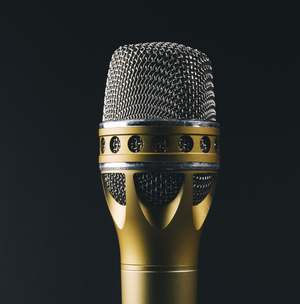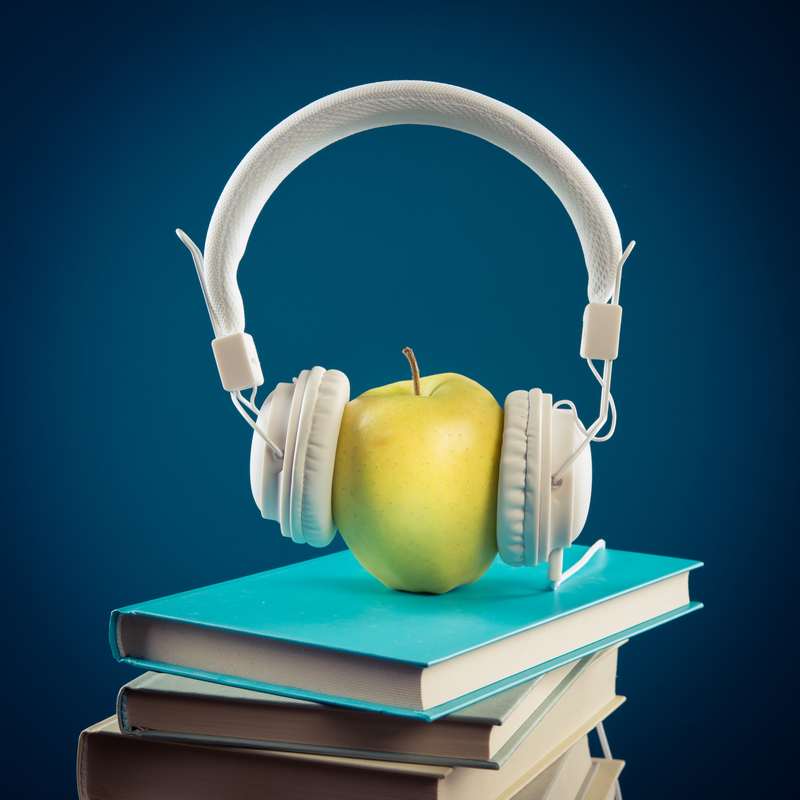Glenda Miller: Welcome to the exciting adventures of first grade. This is one of Debbie Duck’s offspring. A couple of years ago I found this huge Debbie Duck to go with the CLE rhymes.
Ruth Anna Kuhns: We want to spend some time unpacking how we can help our little people become successful readers. We want to look at how to do that by giving them a good phonics foundation. Phonics provides the steps to reading.
One of the first things that you’re going to want to think about as you teach phonics is the idea of phonemic awareness. Phonemic awareness is the ability to hear and manipulate sounds within words. This is key for your first graders. Some of them do not have a clue about this. I’m thinking back to about nine years ago when I had a little boy in first grade. I realized after a few days, he thinks that the word cat is one sound. He doesn’t realize that you can break cat apart and it’s three different sounds, /c/-/a/-/t/. I know that sounds really simple to us. Some of your students don’t have a clue about that, so you need to teach them phonemic awareness. Now, it probably is not going to be incorporated into your curriculum as thoroughly as it should be, so you’re going to have to be intentional about this.
Say the word cat with me.
Group: Cat.
Ruth Anna Kuhns: Now take the /c/ and replace it with /m/. You’ve created a new word. What is it?
Group: Mat.
Ruth Anna Kuhns: Now, take the word
mat, delete the ending sound and replace it with /p/ and now we have?
Group: Map.
Ruth Anna Kuhns: Easy for you. Your students may not have a clue about that. A more difficult phonemic awareness activity would be, let’s say the word,
bring.
Group: Bring.
Ruth Anna Kuhns: Now, delete the consonant blend /br/ and replace it with /bl/ and you have?
Group: Bling.
Ruth Anna Kuhns: Bling. Okay, then you can talk with your students, “Bling, real word, nonsense word?” Then you talk about which words are more fun, real or nonsense words?
This is key.
Glenda Miller: Usually, I start with compound words because those are the easiest. I’m going to break apart a compound word and then you tell me what the whole word is. See if you can hear it. The first one is cup-cake.
Group: Cupcake.
Glenda Miller: Good. Sand-box.
Group: Sandbox.
Glenda Miller: Mail-box.
Group: Mailbox.
Glenda Miller: All right, that’s fairly easy. Now I’ll transition to two syllable words. Le-tter.
Group: Letter.
Glenda Miller: Pen-cil.
Group: Pencil.
Glenda Miller: Good. Now some three syllable words. These are going to be harder. Sep-tem-ber.
Group: September.
Glenda Miller: Al-pha-bet.
Group: Alphabet.
Glenda Miller: Great. My students love that. They beg for this every day. We don’t do it every day, but they love it.
Ruth Anne Kuhn: One thing I wanted you to notice in the review that Glenda did there, did you notice how she started out with easier words? It’s much easier to take a compound word apart—okay, she’s taking it apart and you put it together—that’s easier than your three-syllable word. Notice how she ordered that from easiest to hardest.
Number two, teach vowels and consonants. Vowels are tonal; they are harder to hear. Some six-year-olds actually are not—I don’t think they’re developmentally quite ready to hear the vowel sounds. I find that when I’m teaching a vowel sound, I may need to ask the Lord to bless me with so much patience that day because they can’t hear it—they can’t always hear it. They have to be trained.
Glenda Miller: The /e/ and /i/ can be really confusing for students. There’s some tricks that I’ve found that are helpful. They don’t solve all the issues. I tell them, when we say the /e/ sound you kind of smile and say /e/. I always have mirrors for everybody and they can look themselves in the mirror and say /e/. Everybody say it.
Group: /E/.
Glenda Miller: Just kind of even keel again.
Group: /E/.
Glenda Miller: Then when we come to /i/—they like this—I tell them to wrinkle up their noses and punch the /i/ sound and go /i/. Then they really like to use the mirror and see how they can contort their face. Everybody say /i/ two times.
Group: /i/, /i/.
Ruth Anna Kuhns: I find, in my curriculum, okay, the first vowel that I teach is the /a/, and so times I would just overemphasize it. So they can easily hear if I’m saying aaa-pple. They can hear the /a/, but when it’s hidden in the word like in the word, candle, “Candle? No, that doesn’t have /a/.” Well, what I may need to do then is just overemphasize it, so we have /c/ /a-a-a/, candle. “Can you hear it?” “Oh, yeah.” I find with some of that overemphasis, they’re able to hear it better.
Blend the short vowel words. After you’ve introduced a few sounds to your students, they’re ready to blend them to make words. Your methods are going to vary a bit from curriculum to curriculum, but you always want to begin with three-letter short vowel words.
Glenda Miller: One way is to use the slide analogy. If you have a real slide at your school, they love using a real slide. You won’t do this every day but with a real slide, I would have them go outside and the person goes to the top and holds the s, and as he’s sliding down to meet the person who has the a, he would say, “ssssss-aa” as they bump into each other. Everybody do it with me. Ready?
Group: Ssssss-aa.
Glenda Miller: They love that, but we don’t do that very often. In the classroom, I think it’s important that they all touch the letters when we’re doing this. It just helps with the blending because this can be hard for some students. I have them come to the board and they would just do the same thing as I’m doing on the board. They would go, “”ssssss-aa.” Then when we’re ready to blend the third letter, this can be hard, they should be able to look at these two letters and say, “sa” and then you have /d/, sad. That could be hard. It just takes a lot of practice. There’s other ways you can do that. That is one way.
Ruth Anna Kuhns: Number four, read long vowel words. After the short vowels are introduced, we begin the introduction with the long vowels. Again, here’s some first-grade language going on. Your short vowels are the vowels that say the sound, like ă, ĕ, ĭ, ŏ, ŭ. Your long vowels are when the vowels are saying their name like ā, ē, ī, ō, yo͞o.
A little tip here, long vowels are easier to hear than short vowels. Just throwing that out there for what it’s worth. I know that this is the way that we teach it, and it feels like it builds on itself well, but long vowels are easier to hear.
Often, I will teach them that the E has a long arm and can reach over and tap the vowel on his head. When the vowel is getting tapped that’s when he says his name.
Glenda Miller: They love drawing the arm on the E. Just draw the arm. His long arm comes around and says, “You talk,” taps him on the shoulder and he says, “I.”
When we come to the long vowel words with the silent E at the end, I like to make a real layer cake. They love this and it just sticks with them. I give them each four toothpicks with letters on them that make a word and then they take turns.
Here, we have lake and so they would come up and put the L into the first layer, it’s the consonant. They would stick that in the cake. The next one, the A, talks. When you eat this part of the cake—I put chocolate chips or something crunchy in it, you can hear it in your mouth. That’s the vowel. Then the next is the consonant. You stick that in the next layer of the cake and then the frosting. When you eat frosting it’s quiet in your mouth, you can’t really hear it. That’s the silent E that you put in the frosting.
If you have a bunch of first graders, by the time you’re done, this cake will have all kinds of words all around the cake. After we’re done we, of course, eat the cake. They love this and it’s just a good way to make it stick. I also use this when I give spelling words with the silent E at the end. They don’t know if it’s supposed to be two vowels in the middle or the silent e. If I say it’s a layer cake, they think, “Oh, yes, quiet E is at the end, so just one vowel.” It’s just the A, not AI.
Ruth Anna Kuhns: Wouldn’t that just be so much fun to be able to make a word and then eat it?
Glenda Miller: Then, another way that I just discovered a couple of years ago that they really like is to call the quiet E the sneaky E. They love this because they love acting it out. I usually say it and they’re usually prowling around and acting this out. It’s
Watch out for sneaky E.
Sneaky E doesn’t make a sound.
At the end of words, he hangs around.
Sneaky E is on the prowl.
He’s on the lookout for all short vowels.
He’s been known to sneak about
Stealing short sounds and making them shout,
A, E, I, O, U.
They love that. They’re always down on the floor acting this out. I call them different things, either layer cake words or sneaky E words.
Ruth Ann Kuhns: Number five, read word clusters, digraphs, and diphthongs. It’s also important here to understand word chunks. Like, you have -ing, -ong or -ung. What we’ll do when we’re spelling words with the -ing—and we call that a word chunk—let’s say, we’re taking the word spring apart. We would say s-p-r-ing. That’s a word chunk. You put the word chunk all on one finger.
Glenda Miller: I teach CLE so I love their little rhymes. Even if you don’t teach CLE, you can incorporate this into your curriculum. The one for -er is—I usually have them use their two fingers, but I happen to have a little puppet here that I use. We go rr, rr, rr. Ronnie Rat runs and hides in Robert’s hat. Why don’t we all stand and do this line? Act like we’re first graders. Feel free to hide your rat in your neighbor’s hat.
[laughter]
Ready?
Group: Rr, rr, rr, rr. Ronnie Rat runs and hides in Robert’s hat.
[laughter]
Ruth Anna Kuhns: Even here, you can see how we’re all progressing from easiest to hardest. You started out with phonemic awareness, introduced vowels and constants. You can see how we’re progressing.
This is just a little bit of an overview of the reading steps. Again, giving you another visual for how we progress from easiest to hardest. We start out with sounds, go to word chunks, words, and then phrases and sentences.
One of the things that you’ll want to remember is that as you’re teaching each of these steps, teach for mastery so that this is not a painful process for your students because you can easily see how in this sentence, “We were at the church.” If you’re still having a problem with the word chunk, it’s going to be a lot more difficult to read this sentence, so teach for mastery.

